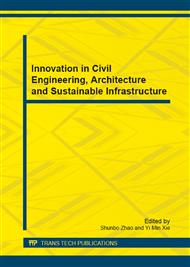p.57
p.61
p.66
p.71
p.75
p.79
p.83
p.87
p.91
Mechanical Behaviors and Chloride Permeability of Rice Husk Ash Concrete
Abstract:
Rice husk ash (RHA) was used as a mineral additive in concrete and replaced the ordinary cement by 0-30% in this study. The fresh concrete properties, compressive strength, split tensile strength, and elastic modulus as well as the chloride permeability of concretes mixed with different RHA contents was tested. The experimental results reveal that the fluidity, the mechanical behaviors and the chloride ion resistance of rice husk ash concrete decrease with the increasing replacement rate of RHA. The particle size of RHA limits its pozzolanic activity, which indicates that the controlled burning temperature and the fineness of RHA have significant impact on the properties of rice husk ash concrete.
Info:
Periodical:
Pages:
75-78
Citation:
Online since:
November 2012
Authors:
Price:
Сopyright:
© 2012 Trans Tech Publications Ltd. All Rights Reserved
Share:
Citation:


